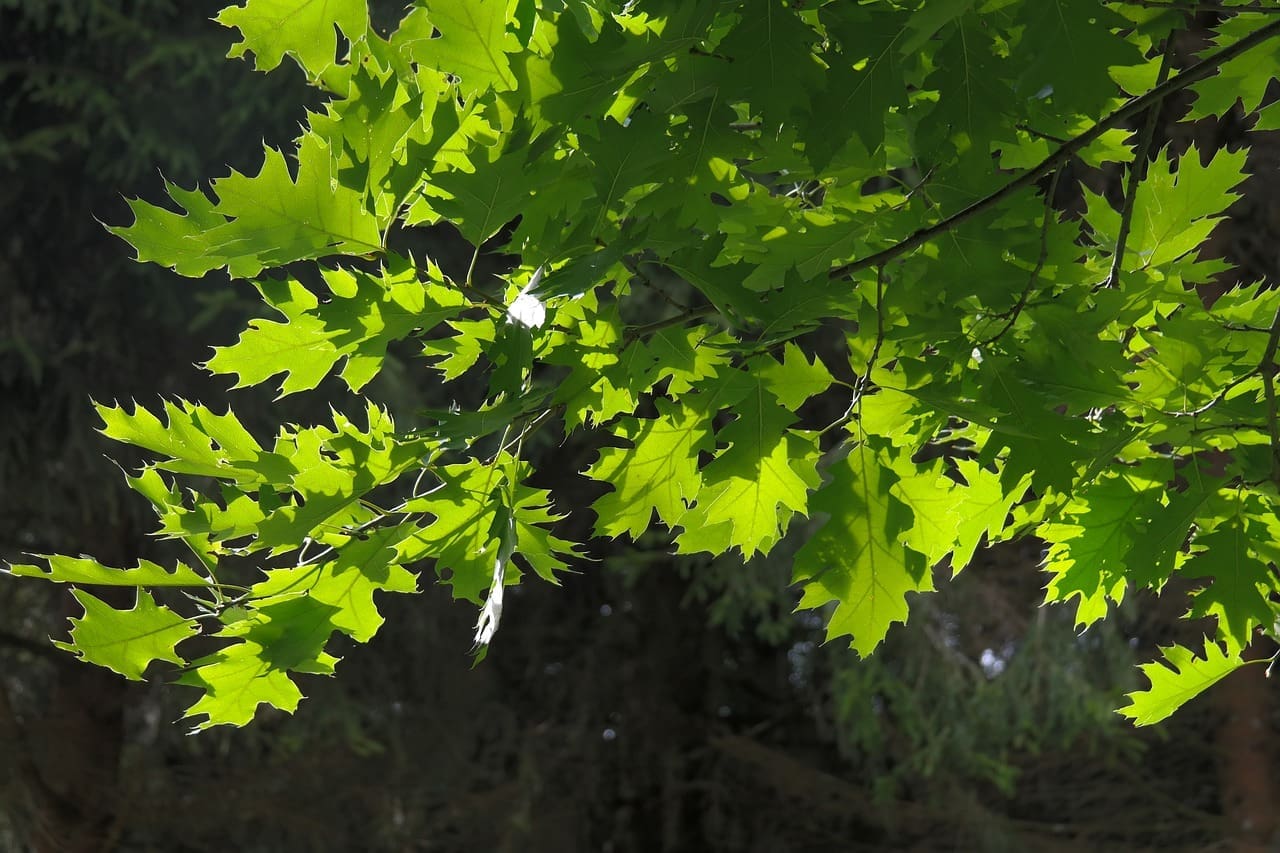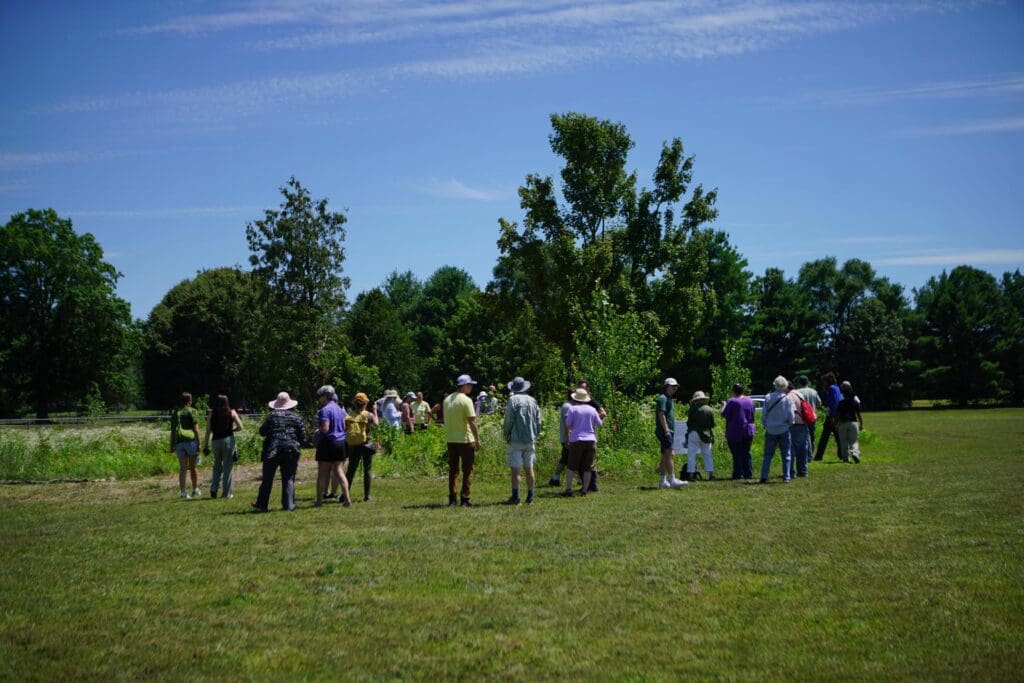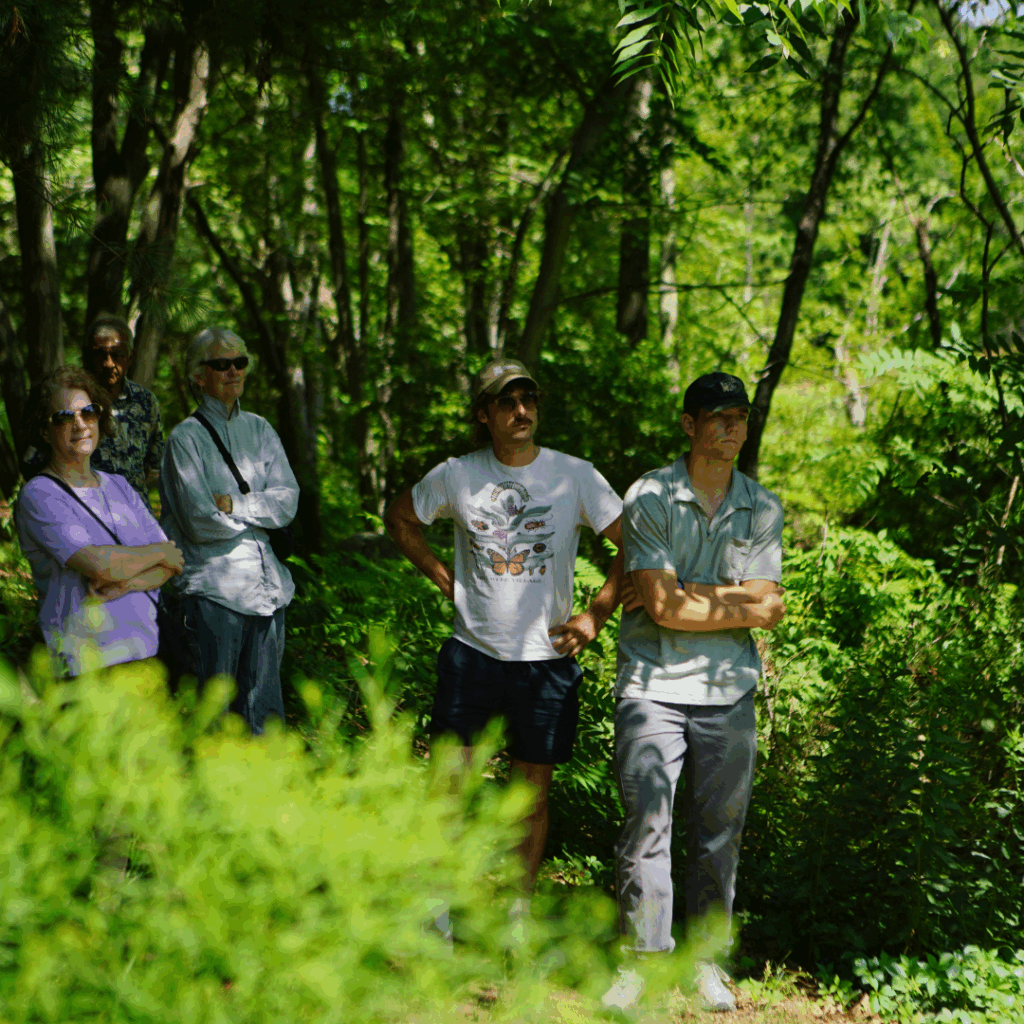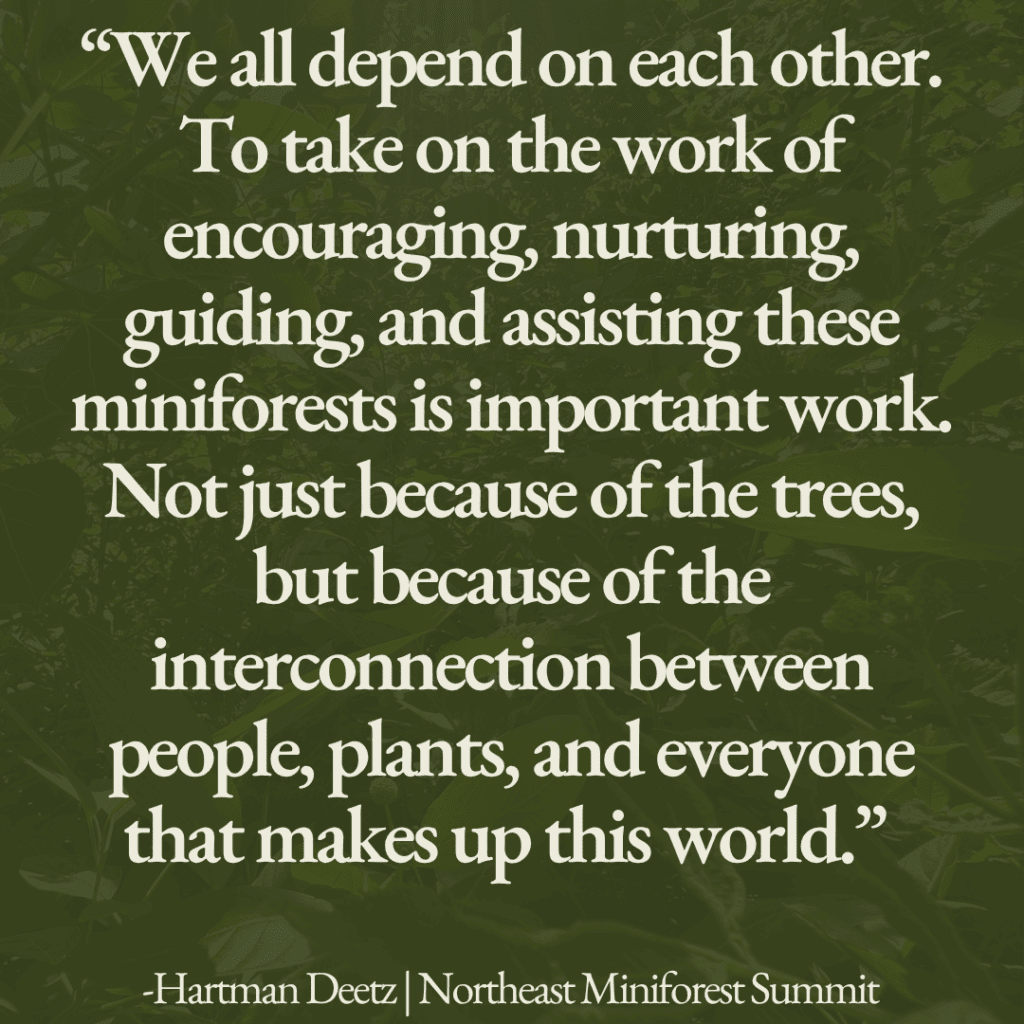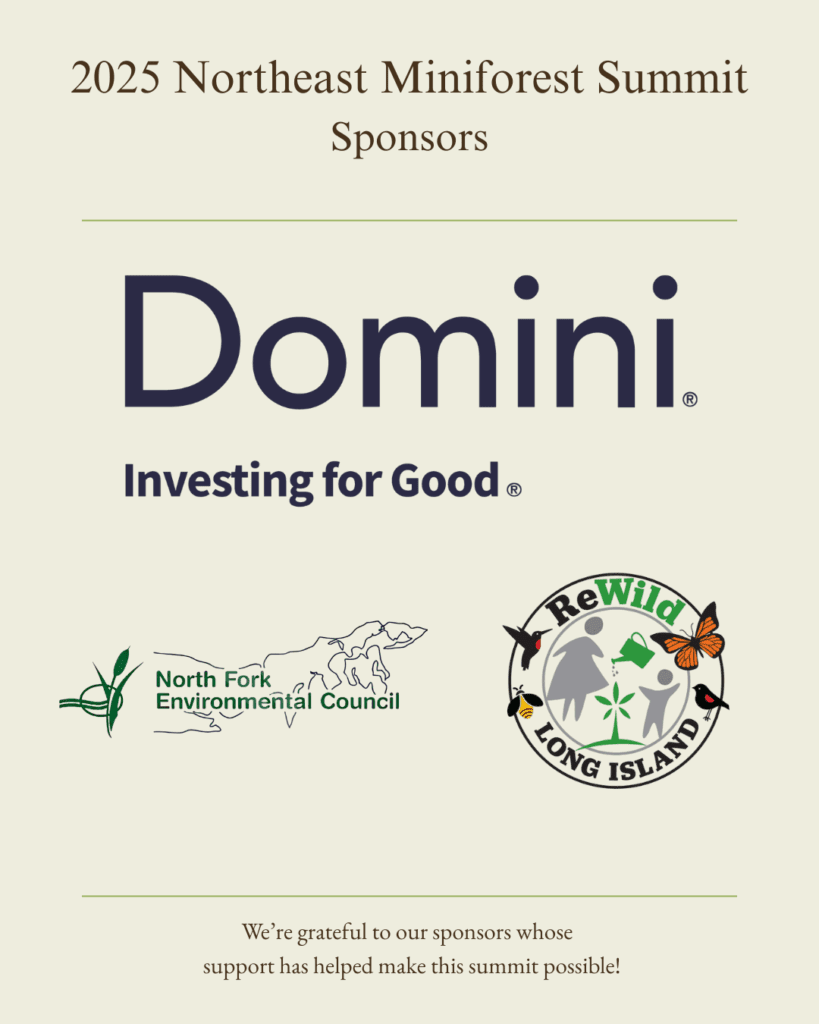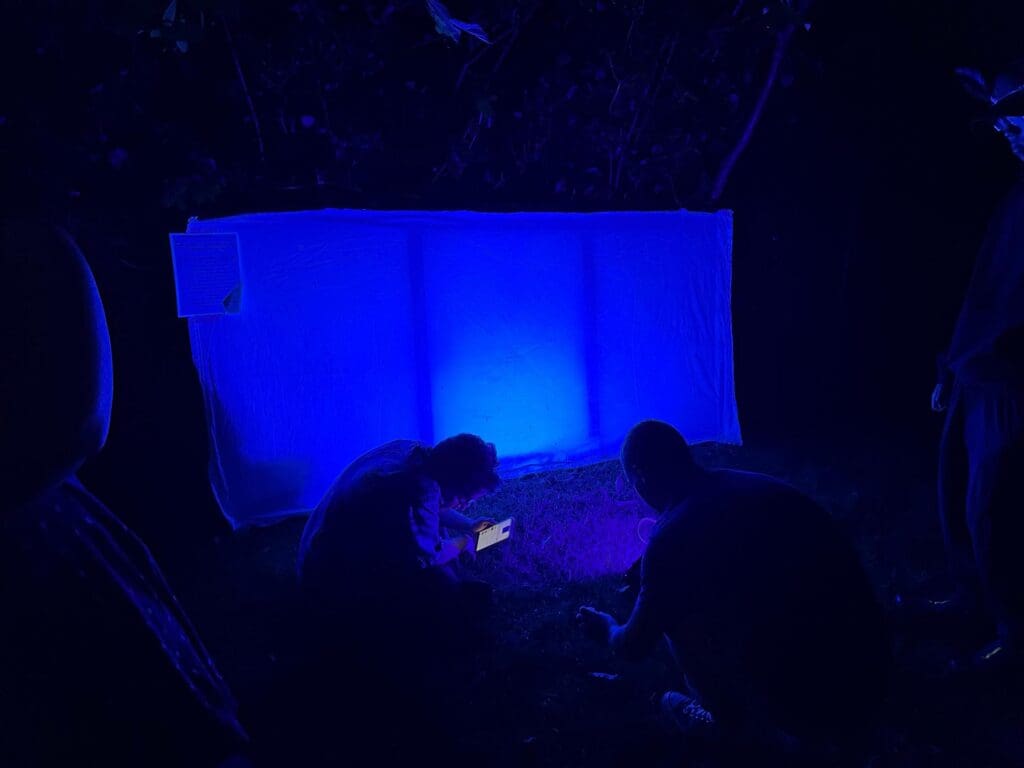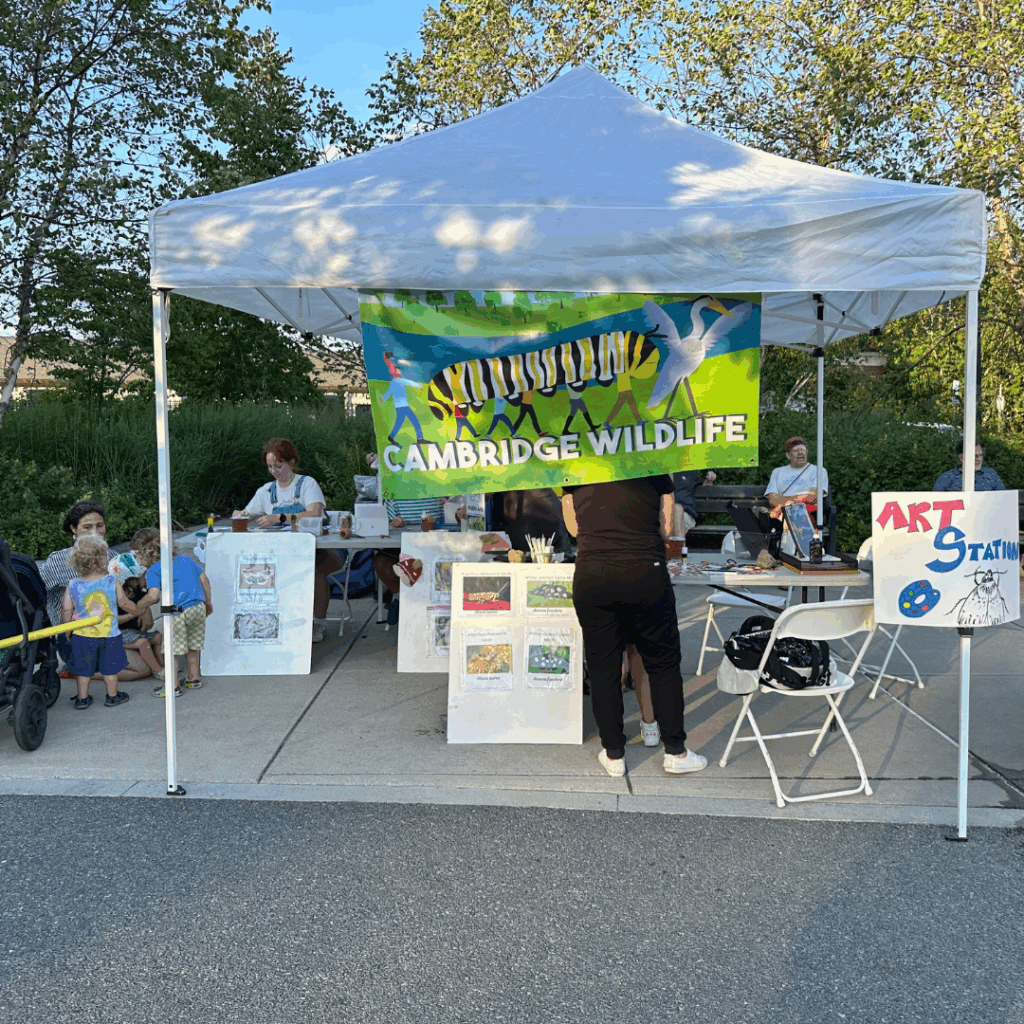What statuesque organism is a champion of beauty, hardiness, and capacity to nurture life around it?
The Northern Red Oak!
In the lush landscapes of North America, the Northern Red Oak stands as a timeless symbol of strength, resilience, and enduring beauty. Revered for its towering stature, vibrant foliage, and essential ecological contributions, this iconic species holds a cherished place in both natural ecosystems and human communities.
The state tree of New Jersey, the Northern Red Oak is sometimes referred to as the “champion oak,” and it certainly qualifies as a biodiversity and climate champion!
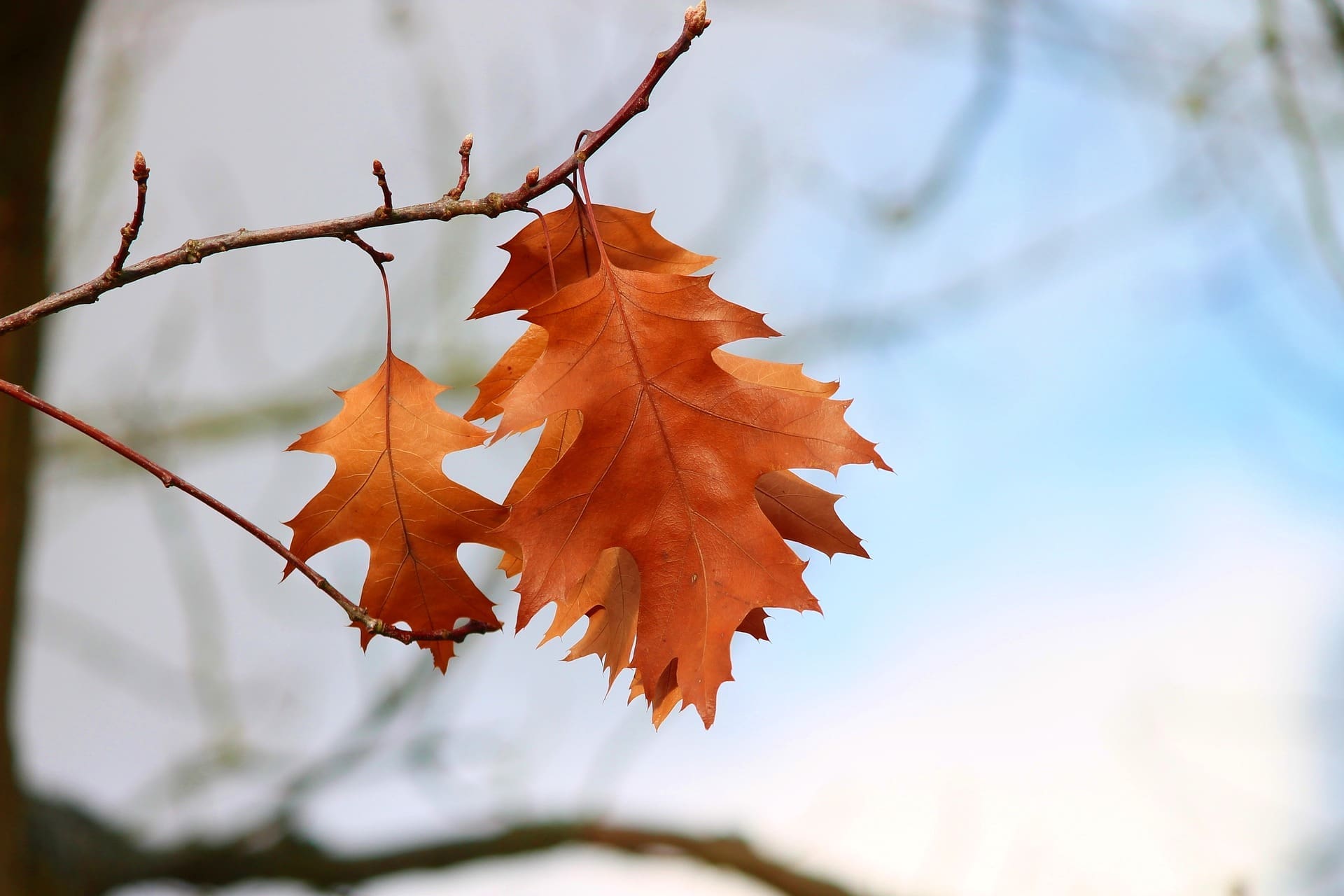
The Northern Red Oak, or Quercus rubra, is an impressive hardwood tree that graces the forests of Eastern and Central North America. Its grandeur is exemplified by its towering height, often reaching between 70 to 90 feet, and its robust, straight trunk. Adorned with deeply lobed, glossy green leaves, the Northern Red Oak undergoes a breathtaking transformation in the autumn, as its foliage turns into a symphony of red, russet, and orange hues, captivating onlookers and adding a burst of color to the landscape.
I got to know my oaks over the past few years as I’ve dived more deeply into the native ecology of New England. Like maples and tulip trees, oaks have fairly recognizable leaves, and make an accessible place to start with species identification. It took me a bit longer to discern between different types of oaks, from the sharp edged Northern Red Oak leaves to the rounded edges of the Swamp White Oak leaves, but it’s a satisfying journey to take to get to know these hallmarks of the landscape better. As I learn trees’ names, patterns, life cycles, and roles, I get to establish a greater kinship with these beings, and witness the beautiful ways they interact with the people, birds, insects, and animals in the ecosystem.
Ecological Support Star
Beyond its visual allure, the Northern Red Oak plays a crucial role in maintaining the health and balance of its ecosystems. Its extensive root system helps prevent soil erosion, and improves the soil sponge for water infiltration, buffering against the intensifying drought and flood cycles affecting our environments. These trees also provide essential food and habitat for a biodiverse array of wildlife.
As many scientists and foresters are beginning to recognize in greater numbers, the more we can preserve and plant keystone native species of our ecosystems, the more deeply and powerfully those ecosystems can mitigate the extreme effects of climate change and global warming. Healthy ecosystems are full of complexity, and in part it is the relationships between different species of vegetation, fungi, microbes, and wildlife that make the whole so successful. Northern Red Oaks are particularly valuable bulwarks of the forest ecosystems of the Eastern and Central US, where they support almost 500 different of butterfly and moth species, which in turn feed the larger food chain. These trees’ acorns also directly supply vital sustenance for many types of wildlife, including blue jays, woodpeckers, turkeys, squirrels, raccoons, and deer. Finally, as old trees begin to decay and die, their trunks and branches go on to house many animals’ dens and nests, continuing to provide throughout the stages their life cycle.
The Northern Red Oak has traditionally been valued for its economic significance, which characterizes a lot of the information you can find on this beautiful tree. Revered for its durable wood, the Northern Red Oak is a prized timber species, notable for its strength, durability, and attractive grain pattern. Its wood can be found in various woodworking applications, including furniture, cabinetry, flooring, and veneer. So next time you see a product boasting its oak hardwood, imagine the long history of that material that lies beneath the surface.
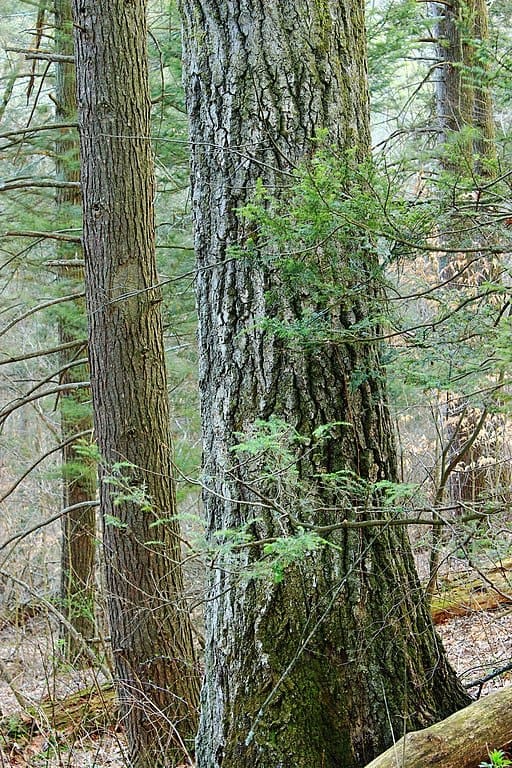
Vital and Versatile
Adaptability is another hallmark of the Northern Red Oak, as these trees thrive in a wide range of soil types and environmental conditions. From lush forests to urban parks, this resilient species can flourish in diverse habitats, underscoring its importance as a cornerstone of biodiversity.
In urban forestry and landscaping, Northern Red Oaks are treasured for providing shade, natural beauty, and environmental benefits to parks, streetscapes, and residential areas. Sometimes, biodiversity value and hardiness to poor soil conditions and urban stressors are thought of as tradeoffs that urban foresters must navigate. However, the Northern Red Oak (and many other remarkable trees) prove that sometimes, you can have it all.
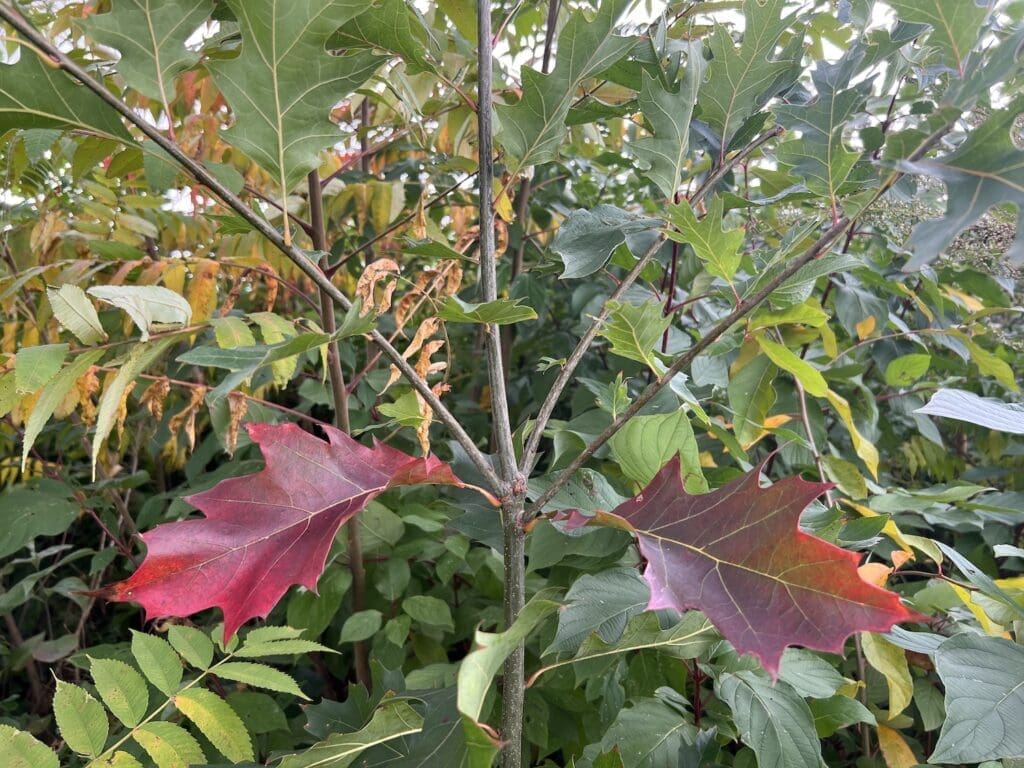
(Image by Maya Dutta)
Despite its resilience, the Northern Red Oak faces threats from pests, diseases, and habitat loss from logging, degradation, and fragmentation, underscoring the need for transforming our relationship to forests and vegetation, these powerful systems for cooling and carbon sequestration. By protecting and preserving Northern Red Oak populations, prioritizing biodiversity and holistic ecosystem health in our climate resilience efforts, we can make a cooler, greener, healthier world for ourselves and the many species we share our home with.
May we make that dream a reality,
Maya

Maya Dutta is an environmental advocate and ecosystem restorer working to spread understanding on the key role of biodiversity in shaping the climate and the water, carbon, nutrient and energy cycles we rely on. She is passionate about climate change adaptation and mitigation and the ways that community-led ecosystem restoration can fight global climate change while improving the livelihood and equity of human communities. Having grown up in New York City and lived in cities all her life, Maya is interested in creating more natural infrastructure, biodiversity, and access to nature and ecological connection in urban areas.
Sources and Further Reading:
https://en.wikipedia.org/wiki/Quercus_rubra
https://forestry.ca.uky.edu/sites/forestry.ca.uky.edu/files/northern_red_oak_factsheet.pdf
https://gobotany.nativeplanttrust.org/species/quercus/rubra/
https://hort.ifas.ufl.edu/database/documents/pdf/tree_fact_sheets/queruba.pdf
https://ufi.ca.uky.edu/treetalk/ecobot-red-oak
https://forestry.com/trees/oak-tree/red-oak-tree/
Wild Seed Project’s Native Trees for Northeast Landscapes (2021)


